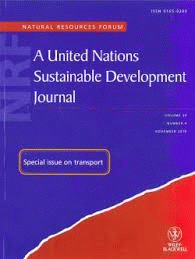Low soil fertility is one of the most important biophysical constraints to increasing agricultural productivity in sub-Saharan Africa. Several renewable soil fertility replenishment (RSFR) technologies that are based on nutrient re-cycling principles have been developed in southern Africa. Some success stories have been recorded (e.g. nitrogen-fixing legumes), but the adoption of RSFR technologies has generally lagged behind scientific advances thereby reducing the potential impacts of the technologies. This paper describes the major RSFR technologies being promoted in the region, synthesizes available information regarding their adoption by farmers, and identifies the challenges, key lessons learnt and the way forward for up-scaling RSFR technologies in the region. The review indicated that farmer uptake of RSFR technologies depends on several factors that can be grouped into broad categories: technology-specific (e.g. soil type, management regime), household-specific (e.g. farmer perceptions, resource endowment, household size), policy and institutions context within which RSFR is disseminated (inputs and output prices, land tenure and property rights), and geo-spatial (performance of species across different bio-physical conditions, location of village). Adoption of RSFR technologies can be enhanced by targeting them to their biophysical and social niches, facilitating appropriate policy and institutional contexts for dissemination, understanding the broader context and dynamics of the adoption process, a paradigm shift in the approach to the dissemination of RSFR (e.g. expanding RSFR to high value crop systems, exploring synergy with inorganic fertilizer) and, targeted incentive systems that encourage farmers to take cognizance of natural resource implications when making agricultural production decisions.
DOI:
https://doi.org/10.1111/j.1477-8947.2007.00163.x
Altmetric score:
Dimensions Citation Count:
























